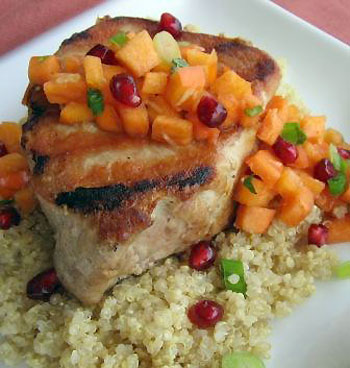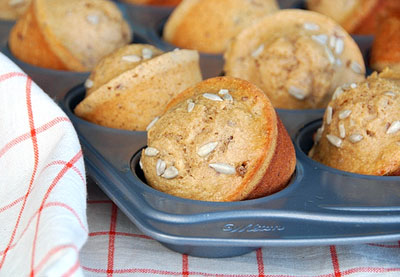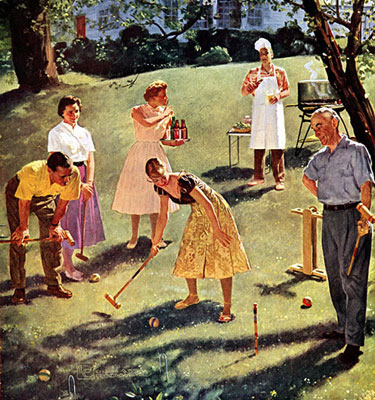
The first time I made this salsa, I used just persimmons and no onion, and I thought it needed a bit more splash. This time I added some savory scallions and tart pomegranate seeds.
It was pleasingly splashier in both taste and presentation. This refreshing salsa pairs especially well with pork, though it would be good with roasted turkey, grilled lamb, or a mild white fish, such as mako shark (which Jeff had and loved last night).
Persimmons aren't just pretty, they're nutritional powerhouses too--especially high in potassium, lutein (for ocular health), and lycopene (a cancer fighting antioxidant).


 The problem with "healthy" muffins is that they're usually bland, rubbery, or dry. I wanted to make a healthy muffin that actually tasted great. One you would
The problem with "healthy" muffins is that they're usually bland, rubbery, or dry. I wanted to make a healthy muffin that actually tasted great. One you would  Pears ... the other fall fruit. Pears just don't seem to get their due respect, taking a back seat to apples, which are the symbolic fall fruit. But pears are exceptional in their own right. And even though they do get compared to apples, pears deserve single attention. If you love pears like I do, you know what I mean. Biting into a ripe, juicy pear is a moment to savor.
Pears ... the other fall fruit. Pears just don't seem to get their due respect, taking a back seat to apples, which are the symbolic fall fruit. But pears are exceptional in their own right. And even though they do get compared to apples, pears deserve single attention. If you love pears like I do, you know what I mean. Biting into a ripe, juicy pear is a moment to savor.

